This is the story of a queen who was so feared that centuries later, kids still whisper her name into mirrors at sleepovers, daring her ghost to appear. A queen whose story got twisted into a scar legend; a legend that even inspired a spicy red cocktail.
That queen was Mary Tudor, but you may know her as “Bloody Mary.“
Behind this horror story and legendary nickname was a real woman who lived in one of the most dramatic times in English history. Mary was the daughter of Henry VIII, the king who kept marrying and beheading wives. She fought her way onto the throne against powerful enemies and became the first official queen to rule England on her own.
So why does history not remember her as “Mary the Brave” or “Mary the First,” but as “Bloody Mary”? What happened? Was she really a monster who drenched England in fire and blood? Or was she a misunderstood queen whose offence was fighting for her faith in a dangerous world?
Let’s find out.
A Princess in the Shadow of Divorce
Mary Tudor was born in 1516. She was the only surviving child of King Henry VIII and his first wife, Catherine of Aragon. From the start, Mary was adored by her parents to the extent that Henry often paraded her at court, showcasing her intelligence and skill in music and languages.
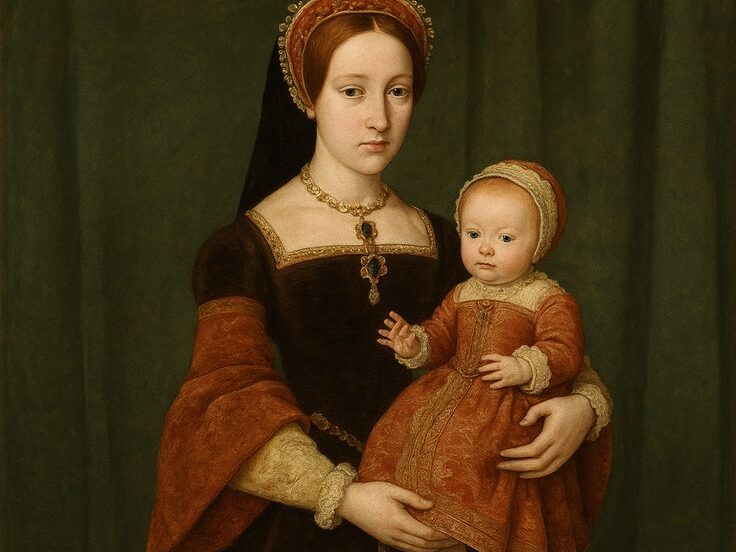
At first, Mary enjoyed her father’s unwavering attention, but soon her world came crashing down when Henry decided he wanted a son desperately. Henry was so obsessed with producing a male heir that he severed ties with the Catholic Church in Rome, allowing him to divorce Catherine and marry Anne Boleyn.
Her loyalty to Catholicism was not just based on faith, it was about honoring her mother’s memory and resisting the humiliation her father, Henry, forced on her.
The fallout was devastating for Mary. Her mother was cast aside, and she was declared illegitimate. The girl who was once a princess was suddenly treated as a nobody. As if that wasn’t bad enough, she was forbidden from seeing her mother, whom she loved deeply. When Catherine of Aragon died in 1536, Mary never even got to say goodbye.
This trauma shaped Mary forever. Her loyalty to Catholicism was not just based on faith; it was about honoring her mother’s memory and resisting the humiliation her father, Henry, forced on her.
From Bastard to Heiress
Life in the Tudor court was never safe. Mary’s position rose and fell depending on Henry’s marriages. After Anne Boleyn was executed, Mary was brought back into favor, but she was still technically illegitimate.
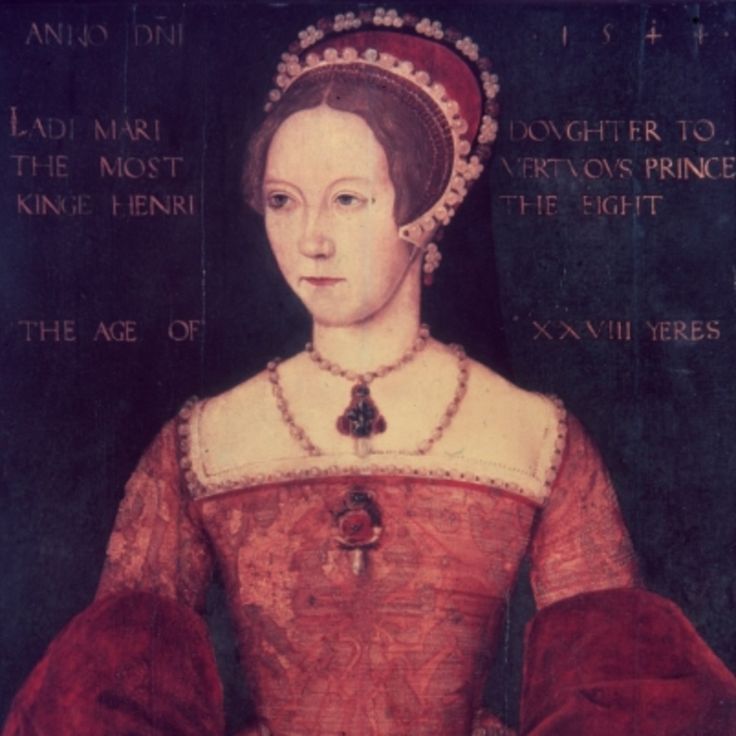
Things changed again when Henry’s son, Edward VI, who often fell sick, inherited the throne in 1547. Edward was a staunch Protestant, and under his reign, the Church of England moved further from Catholic traditions. Mary, however, refused to give up her faith. She even continued to hear Catholic Mass in private, clearly going against Edward’s orders.
By the time Edward was breathing his last on his deathbed, a showdown was already brewing.
Lady Jane Grey: The Nine Days’ Queen
Before he died, Edward made a daring move. He was worried that after his death, his catholic half-sister, Mary, would undo all his Protestant reforms. So, he bypassed both Mary and Elizabeth (Henry’s daughters) and named his Protestant cousin, Lady Jane Grey, as his heir.
Within days, Jane’s forces melted away and Mary marched triumphantly into London, cheered by crowds.
Jane was a brilliant and bookish 16-year-old girl with no real desire to rule, yet powerful men at court still backed her as queen. However, Edward’s plan backfired.
Mary and her loyal supporters rode out to claim her throne. The people also rallied to her cause because, after all, she was Henry VIII’s eldest, and many people saw her as the rightful heir.
Within days, Jane’s forces melted away, and Mary marched triumphantly into London, cheered by crowds. Jane was imprisoned in the Tower, and Mary Tudor became the first queen of England, not a queen by marriage, but one in her own right. It was a historic victory for women in power. Unfortunately, Mary’s reign would soon be remembered for darker reasons.
A Marriage That Sparked Riots
Mary was 37 years old when she became the queen, which was older than most monarchs were when they first took the throne, and she knew time was running out if she wanted children.
She needed to produce an heir urgently, especially if she wanted to secure a Catholic future for England. She had to make a good choice, so she chose Philip II of Spain, a powerful Catholic prince.
She crushed the revolt with determination, executing hundreds of people in the process, including Lady Jane Grey and her young husband.
To Mary, the marriage made sense because it linked England with mighty Spain, and Philip could help her strengthen the Catholic restoration. But the English people felt differently. To them, the union was a disaster. They feared being drawn into Spain’s wars and also disliked the prospect of being ruled by a foreign king.
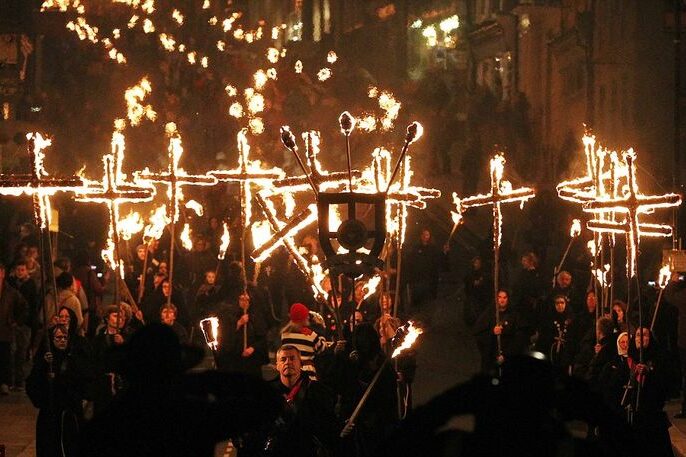
Riots broke out, including Wyatt’s Rebellion in 1554, which nearly led to the dethroning of Mary. However, she crushed the revolt with determination, executing hundreds of people in the process, including Lady Jane Grey and her young husband. Mary’s iron resolve and strong determination impressed some people, but horrified many others.
The Marian Persecution Burnings
Mary’s true legacy, that is, the part of Mary’s reign that people still discuss today, is the Marian Persecution, a period marked by brutal punishments and burnings.
Between 1555 and 1558 nearly 300 Protestant heretics were burned in England.
Because she was determined to restore Catholicism, Mary passed laws that made Protestant practices illegal, and heresy trials began. Those who refused to give up Protestant beliefs faced death.
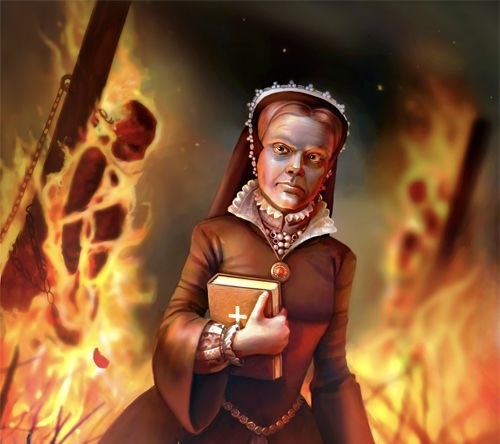
Between 1555 and 1558, nearly 300 Protestant heretics were burned in England. Some of whom were ordinary people, while others were well-known figures, such as Bishops Hugh Latimer, Nicholas Ridley, and Archbishop Thomas Cranmer.
The way Mary executed them was brutal. Crowds gathered and watched as flames burned victims, hearing their screams echo through the air. Protestants spread pamphlets and stories of these deaths, turning the martyrs into heroes of the faith.
The effect of the prosecutions was devastating to Mary’s reputation. Instead of restoring Catholic unity, she created lasting resentment. Even many who might have supported her were horrified by the spectacle of smoke and ash rising from England’s towns. It was during this time that the nickname “Bloody Mary” took root.
Phantom Pregnancies and Shattered Hopes
Mary longed for a child, for both personal and political reasons. Twice, she believed she was pregnant. She had symptoms that made her claim seem real, but each time, the pregnancies turned out to be false. They were likely phantom pregnancies that were caused by stress or illness.
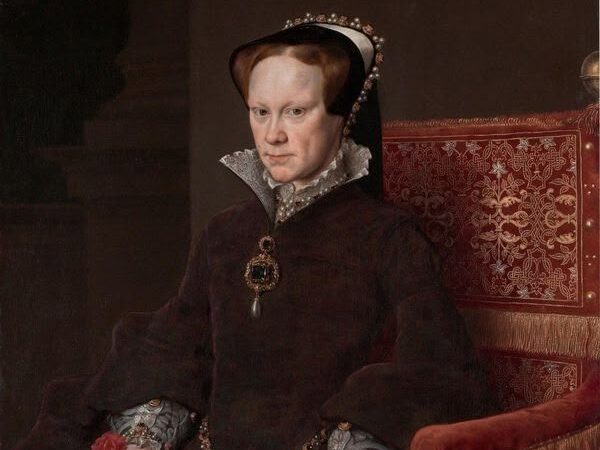
The disappointment was crushing. Without an heir, Mary’s dream of a Catholic dynasty crumbled. Her husband Philip spent a little time in England, as he was more interested in ruling Spain than sharing her throne. Mary was left alone, heartbroken, and mocked by her people.
The Final Blow
By 1558, Mary was worn down by illness, grief, and political failure. England had lost Calais, its last territory in France; a humiliation she took personally. On her deathbed, she reportedly said, “When I am dead and opened, you shall find Calais lying in my heart.”
Mary died at 42, leaving the throne to her half-sister, Elizabeth I, a Protestant who would undo nearly all of Mary’s Catholic reforms.
So how should we remember Mary Tudor?
To the Catholics who lived during her reign, she was a martyr-queen who bravely defended the true faith against heresy. To Protestants, she was a tyrant whose hands were soaked in blood, the villain of the English Reformation.
Yet she was also the first woman to wear England’s crown in her own right, paving the way for Elizabeth I’s golden age. In that sense, we can say Mary walked so Elizabeth could run.
To modern historians, she is more complex; she is a woman who was scarred by childhood trauma, desperate to prove herself, and trapped in the brutal politics of the 16th century.
Her reign was short, just five years, but the fires of the Marian burnings burned her legacy into English memory. The nickname “Bloody Mary” stuck, immortalized in folklore, ghost stories, and even a cocktail.
Yet she was also the first woman to wear England’s crown in her own right, paving the way for Elizabeth I’s golden age. In that sense, we can say Mary walked so Elizabeth could run.
The Legacy of a Nickname
It is fascinating how one name can shape centuries of memory. When you ask most people about Mary Tudor, they will think of the Bloody Mary legend; they might even chant her name in front of a mirror or sip a tomato juice cocktail.
She was a daughter who was scarred by her father‘s choices, a ruler who fought for her beliefs, and a queen who made fatal mistakes.
But behind the myth was a lonely, determined queen who wanted nothing more than to honor her mother, restore her faith, and secure her throne. She failed in doing all of that, but in failing, she became unforgettable.
Mary I of England was many things. She was a daughter who was scarred by her father’s choices, a ruler who fought for her beliefs, and a queen who made fatal mistakes. Whether you see her as a queen, martyr, or monster depends on which part of her story you emphasize.
Mary’s reign was fiery, and her legacy still sparks debate nearly 500 years later. So, the next time you hear the name “Bloody Mary,” don’t just think of the ghost in the mirror. Think of the real woman who fought, ruled, loved, and lost in one of the most dramatic chapters of Tudor history.
What’s your take on this? What part of Mary’s life struck you the most? Her fight to become queen, her harsh burnings, or her tragic failures? Drop your thoughts in the comments and share this with a friend who loves a good Tudor drama.
Sources and Further Reading
- Henry VIII’s six wives overview – Encyclopaedia Britannica: The six wives of Henry VIII
- Mary I entry – 1911 Encyclopaedia Britannica (n.d: “Mary I., Queen”)
- Mary I biography and reign explained – YouTube( History Scope, 2022)
- Mary Tudor resources – TudorHistory.org(n.d: “Mary I (1553 – 1558”)

